Short-term educational project in kindergarten. Project (preparatory group) on the topic: Project activities in the preparatory group

Creative project for children 6-7 years old "Cartoon with their own hands" or "Adventure of Dandelions in the country Animation"
Material Description: Dear colleagues! I bring to your attention the creative project "The Adventure of Dandelions in the Country Animation." The project is designed for children of the preparatory group. We suggested that if we reveal the secrets of creating cartoons, we can create our own cartoon. Place of work: MBDOU "Kindergarten of the combined type No. 44", the city of Miass, Chelyabinsk region.
Type of project- A medium-term, joint parent-child creative project.
Project participants: children of the preparatory school group “Dandelion”, parents, group educator.
And we challenge boredom
Just because
To live in the world without cartoons
Impossible to anyone
May good luck, failure,
Let the flights up and down
Only this way and not otherwise
Long live the cartoon!
Cartoon, cartoon
Long live the cartoon!
Entin U.
What do children love the most? Well, of course cartoons! Our childhood is most closely associated with cartoons. A cartoon is a fairy-tale world that helps a child develop, fantasize, learn to empathize with heroes, learn the rules of behavior, learn to make friends. Cartoons are a very effective tool for the development of the child. Only if it is a good cartoon. With their help, you can carry the child into the learning process. And we also really, really like watching cartoons. And we have long dreamed of creating our own cartoon. But how to create it? Where to start? What are the secrets of creating cartoons?
Relevance of the project: All teachers know how important it is for children to be interested in doing one or another activity, their faces radiate joy, and their eyes burn with delight. And how to achieve this effect? One of the most important conditions for the successful development of children's creativity is the diversity and variability of working with children. The novelty of the situation, a variety of materials, interesting new and original technologies for children, the possibility of choice - this helps to prevent monotony and boredom in children's activities, ensures liveliness and immediacy of children's perception and activity. It is important to create a new situation each time so that children, on the one hand, can apply previously learned skills, on the other, look for new solutions, creative approaches. In search of methods that contribute to the development of creative thinking of the child, I turned to animation.
Purpose:Discover the secrets of creating cartoons. Create a cartoon with your own hands.
Hypothesis: We suggested that if we reveal the secrets of creating cartoons, we can create our own cartoon.
Tasks:
Educational:
To acquaint children with the history of the emergence and development of animation.
To introduce children to the technology of creating animated films.
To expand children's knowledge of professions: screenwriter, director, animator, cameraman, sound engineer.
Developing:
Develop creative thinking and imagination.
To form art skills.
Build coherent speech skills.
Educating:
Raise interest, attention and consistency in the process of creating the cartoon.
To foster an aesthetic sense of beauty and harmony in life and art.
To inculcate a responsible attitude to your work.
The essence of the project: Mastering and using the skills of modeling, drawing, designing, performing applications and crafts, children make characters and decorations for games, staging performances and shooting cartoons.
Expected Results:
For kindergarten:
1. Creating the conditions for the development of the child as an individual.
2. Updating the content of education and a qualitative change in the educational process and the activities of DOE.
3. The possibility of providing parents with additional educational services for the development of children.
For a child:
1. The interest of children in visual activity.
2. Able to convey creative ideas with the help of various types of arts and is actively involved in the creative process.
3. The child was given the opportunity to collaborate creatively with peers and adults.
4. The level of information culture has increased.
For parents:
1. Meeting the need for a variety of additional services for the development of children.
2. A high degree of parental awareness of the development of the child.
3. Creative activity of parents through active inclusion in the project.
For the teacher:
1. Professional development in the field of
2. information and computer technology.
3. Realization of creative potential.
4. Satisfaction with one's own activities.
Stages of the project.
Organizational (preparatory stage)
Modeling a problem situation, allowing to identify a problem, bring children to an independent conclusion.
Once, while drawing fairy-tale heroes, we discussed our favorite scenes from cartoons, worrying and rejoicing for the cartoon heroes, the question arose from the guys: “Could you make a cartoon yourself?”
Using the methodology of “three questions, we develop a project:
What do we know? What do we want to know? How do we know?
Problem:
So we faced a problem of children's ignorance about how cartoons are created, people of what professions are involved in creating animated films. To get answers to our questions, we decided to conduct a study.

Piggy bank: A lot of various interesting information was included in the piggy bank.
1. Selection of material, search for information on the Internet, literature on cartoons.
2. A survey of children on this topic (questionnaire).
3. Studying the history of the animation.
4. Types of cartoons.
5. Studying the process of creating a cartoon.
6. Development of an algorithm for working on a cartoon.
7. Preparation of materials and equipment necessary for the implementation of the project.
8. Drawing up a thematic plan for working with children and cooperation with parents.
9. Discs with your favorite cartoons;
10. Information about the professions of people creating cartoons;
11. Information about the first animated toys. (Activate cognitive activity, learn to use sources of information.)
Main stage
Knowledge accumulation:
Conversations “What is animation”, “History of animation”, “What are cartoons” (Cartoon classification), “The process of creating a plasticine cartoon”, “Wizards of animation” (acquaintance with professions: screenwriter, animator, animator, sound engineer, operator, etc.), “The History of Animation,” “How to Make a Cartoon,” “What Tools are needed to create a cartoon”
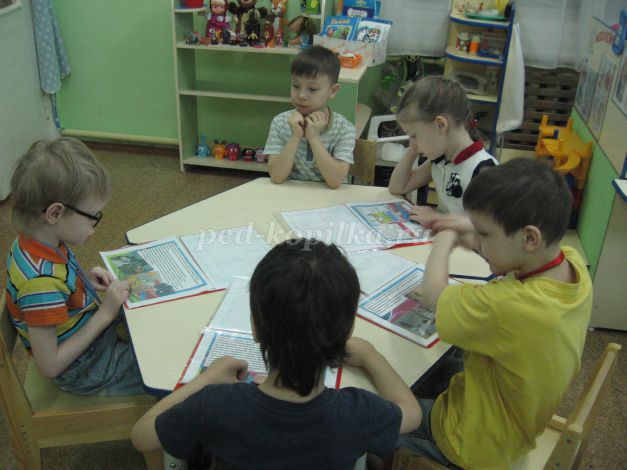
Consideration of albums, illustrations, magazines, photos on the topic of the project.
Organization of an exhibition of books in the book corner: E. Uspensky “Crocodile Gena and his friends”, A. Lindgren “Baby and Carlson”, A.S. Pushkin “The Tale of the Fisherman and the Fish”, etc.
Creation of a creative group of parents interested in this topic. Thought over homework for parents, namely, they suggested that parents create toys with an optical effect with their own hands or an article of my favorite cartoon character.

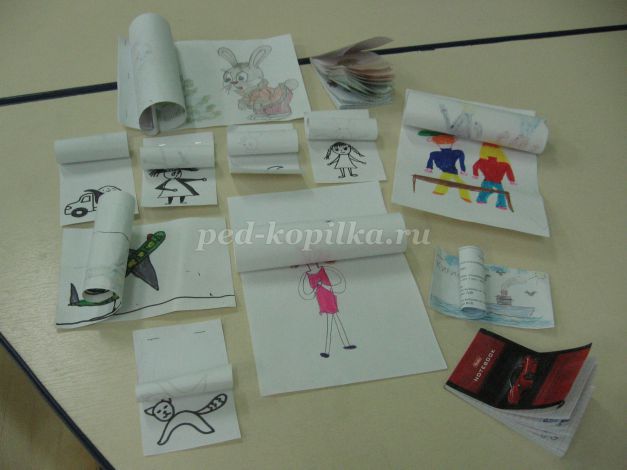
practical part
Communicative activity:
Riddles about cartoon characters.
Trivia "Cartoon connoisseur", "In the Country of Multi-Pultii."
Retelling the tale, storytelling by roles.
Staging a fairy tale.
The game "What first, then what?"
Retelling of the fairy tale, role-telling "Gift for the Snow Maiden. Winter's Tale". S. Prokofiev and I. Tokmakov.
Staging a fairy tale.
Game activity:
Quiz "Connoisseurs of cartoons."
Theatrical game "Transformation of Children". At the command of the teacher, children turn into trees, flowers, mushrooms, toys, butterflies, snakes, frogs, kittens, etc.
Didactic games: “Who is missing and who is superfluous?”, “Find a couple”, “Make a picture of the parts”, “Who needs what?”, “Learn a fairy tale”, “Guess the mood”, “Cartoon labyrinth”, "Favorite cartoon characters gathered to drink tea."
Plot role-playing game: "We are animators."

Cognitive research activities:
Creation of a do-it-yourself toy with optical effect, Taumatrop,
"Magic pinwheel."
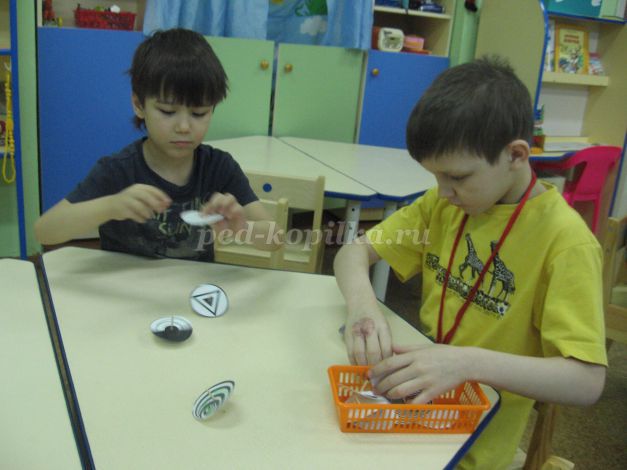
Visual activity:
Work on the background using unconventional drawing methods.
Work on the scenery for the cartoon, using unconventional drawing methods.
Modeling heroes from plasticine.


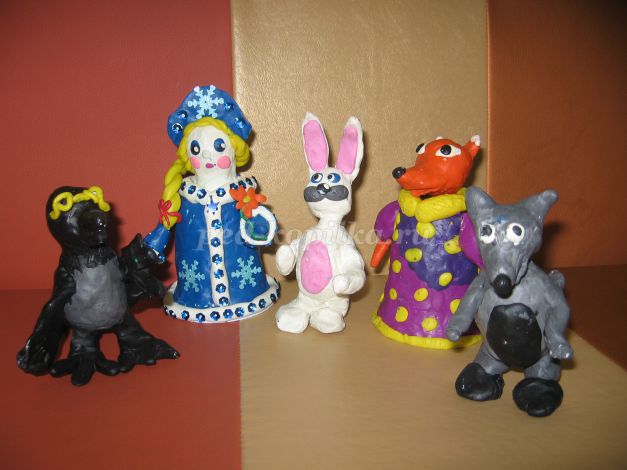
Drawing "Favorite Cartoon Hero".
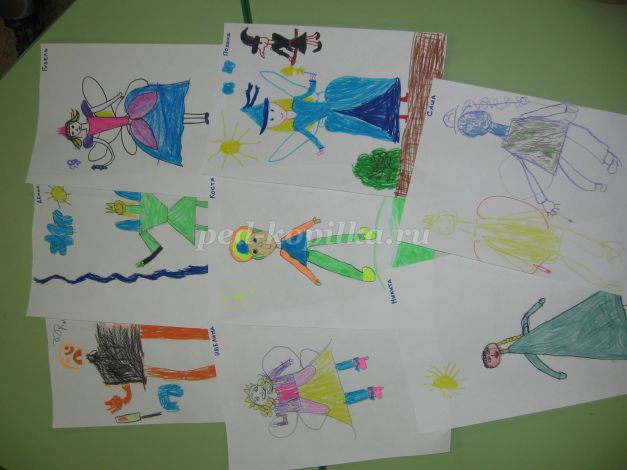
Drawing stories in pictures (inventing stories and compiling mimotables “Young Scriptwriters”).
Final lesson on the theme "Making the poster."
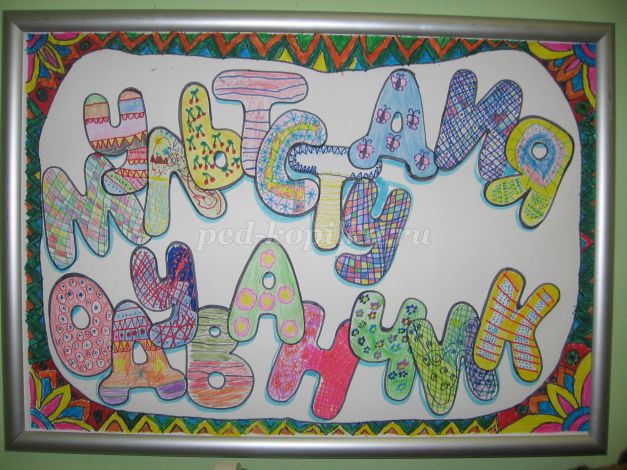
Color the cartoon hero.
Draw your favorite cartoon characters.
Perception of fiction:
Reading books on cartoons. E. Uspensky “The Crocodile Gene and His Friends”, A. Lindgren “The Kid and Carlson”, A.S. Pushkin “The Tale of the Fisherman and the Fish”, etc.
Reading "Gift for the Snow Maiden. Winter's Tale". S. Prokofiev and I. Tokmakov.
Structurally - model activity:
Designing a fabulous city based on cartoons.

Making masks for dramatization.
"Create a fairy-tale hero." Home-made designer on magnets.
"Fairy-tale creatures" notebook - confusion over fairy-tale heroes.
Motor activity. “Who?”, “Dragon Tail”, “Little Red Riding Hood.”
Work on introducing to the musical art. Listening to music from cartoons, performing songs from cartoons; learning dances to the music of cartoons. Dramatization of musical episodes from cartoons.
Parents were recommended.Consultation “Children and animation”, questionnaire “Do you know what cartoons your children like”, Exhibition of family works: “Favorite cartoon characters”.
Subject-developing environment. Making a corner of a group devoted to animation using children's drawings and illustrations from magazines. The introduction of masks of cartoon characters in the plot role-playing games, the joint creation of attributes for the plot role-playing games. CD disc with songs from the cartoons.

Immersion in a fairy tale.
Storyboard.
Design and creation of characters and scenery.
Animation of characters.
Beat the plot.
Shooting a cartoon.
Mounting footage on a computer.
Sounding (distribution of roles).


THE FINAL STAGE
Presentation of project products:
1. An exhibition of children's works on the topic "Favorite Cartoon Characters".
2. DIY toys with optical effect.
3. The final lesson on the topic "Making the poster."
4. The premiere of the cartoon. View (result of work).
5. Presentation of the project.

Further use. Animation as a modern integrated form of art and learning allows you to: solve the issues of artistic development of preschool children; expand the boundaries of knowledge; actively include children in the creative process; form aesthetic assessments and preferences; step up freedom of creative expression. Animation classes help to see the familiar in a new way, to understand the beauty of the world and human relationships. In the process of creating an animated film, children develop sensorimotor qualities associated with the actions of the child’s hands, providing quick and accurate assimilation of technical methods in various types of activities, perception of proportions, shape features, nature of lines, spatial relationships, color, rhythm, movement. The art of animation develops creative thought, forms the ability of the original presentation of the vision of the world. Therefore, animation activity, as a creative activity, plays an invaluable role in the creative development of children. I believe making cartoons in kindergarten - It is not only possible, but also very useful for revealing the talents of children.
Setting a new goal: creating a hand-drawn cartoon about our group “What we dream about”.
In preparation for working on a creative project, we used
literature:
1. Bolgert N. Bolgert S. Multimedia Studio Plasticine. - M .: ROBINS, 2012
2. Kiseleva M.V. Art therapy in working with children: a guide for child psychologists, educators, doctors and professionals working with children. - St. Petersburg .: Speech, 2014
3. Kopytin A.I. Psychodiagnostics in art therapy. - St. Petersburg: Speech, 2014
4. Kukushkina E.Yu., Samsonova L.V. We play and learn to be friends. Socialization in kindergarten. - M.: SC Sphere, 2013
5. Smolnikova K. Cartoon do it yourself. [Text] K. Smolnikov. // Satkin worker. - 2011. - No. 15.04.2011
6. Nikitin V.N. Art therapy: tutorial. - M.: Kogito-Center, 2014
7. Oberemok S. M. Project Methods in preschool education. - Novosibirsk, 2005.
8. Timofeeva L. L. Design method in kindergarten. "Cartoon do it yourself." - SPb. : LLC PUBLISHING HOUSE CHILDHOOD-PRESS, 2011.
Material Description: I bring to your attention the project “Our funny garden”, Aimed at expanding children's perceptions of the world around them and instilling work skills through the joint creation of a garden on a kindergarten site.
Education Integration: in this project all educational areas are viewed.
Relevance
As you know, "the best discovery is that which the child makes himself." Every spring at home on the windowsill of mothers and grandmothers a green carpet blossoms, seedlings in drawers various shapes and color, but children are strictly warned not to touch these interesting plants. And interest and curiosity is getting stronger every year, the guys themselves would have gladly planted a miracle plant, watered it, looked after it. So we came up with the idea to create our own garden - this is a miracle - a garden that is designed to develop the environmental values \u200b\u200bof nature. Exactly at preschool age positive feelings for nature and natural phenomena are laid, an amazing diversity of the plant world is revealed, the role of nature in human life is first recognized. In our garden, children themselves can plant and grow plants, take care of them.
Type of project
By duration - short-term.
The composition of the project participants is a group one.
The focus of the activities of the project participants is cognitive-game.
purpose: To expand children's ideas about the world and instill work skills through the joint creation of a garden.
Tasks:
To form ideas about the work carried out in the spring and summer in the garden.
To expand children's understanding of plant life.
To learn to observe the planting and seedlings.
Teach children to draw conclusions based on observations.
Participate in feasible practical activities.
To cultivate a caring attitude towards plants.
To expand, enrich, activate the vocabulary of children.
To contribute to the development of perception of the beauty of nature and its transfer through drawing, modeling, application.
Promote the interaction of family and kindergarten.
Stages of the project:
|
events |
|
|
Stage 1. Organizational preparatory |
Discussion of the goals and objectives of the educator with children and parents, specialists; Selection of the necessary material to create a garden; Identification of children's knowledge of plant life; Drawing up a long-term plan. |
|
Stage 2. Reflexively diagnostic |
Making the necessary changes to the action plan in the light of the work done. |
|
3 stage. Practical |
Cognition: “Insect helpers”; examination of plant seeds; seedling observation; observation of the growth and development of the plant. Design: garden design; Socialization: D / And “Collect the plant”, “What for what”, “Gardener's tools”. Role-playing games - “At the cottage”, “In the store”, “Watering the garden”, “Salting for the winter” Communicative activities: compilation of the story “Summer in the garden”, “How I help in the garden”, learning proverbs, labor sayings, their dramatization. Reading: poems - S. Vitaliy “The Garden”, S. Sirena “The Garden”, O. Emelyanova “What grows in the garden”, works - J. Rodari “Cipollino”, riddles, proverbs, sayings about vegetables, fruits. Labor: Planting seeds of flowers and vegetables; planting seedlings on the site; scheduling watering the garden, the organization of duty, collective individual labor orders. Productive activity: application "Bouquet"; "Basket with vegetables"; "Preserve vegetables." Modeling: “Decorative panel” (teamwork); "Tulip" (nalep); "Insect assistants." Drawing: "I am in the garden"; “My favorite plant”, “Bouquet as a gift to a loved one”; "Flower fantasy" (unconventional technique); "Vegetables" (drawing from nature). Safety: “Rules for working with tools”; "Do not forget about Panama." Health: "On the benefits of vegetables" (conversation); (view cartoon) "unwashed vegetables cannot be eaten." |
4th stage. Final |
Design materials for the project: Making a photo of the album "Our Fun Garden". Layout "Plant Structure". - "The plant and its seed." |
Expected results of the project:
· Gaining children's knowledge about plant life.
· Creating the necessary conditions in the group and on the site for observing the life of plants, and the ability to care for them.
· Develop cognitive interest in children, curiosity, communication skills.
· Develop the ability to properly use the simplest tools for working the soil and caring for plants.
· Involvement of parents in the life of the kindergarten.
Project Resource Support
1. Staffing.
Project participants: - Senior educator (methodological support and counseling);
Children of the middle group;
Parents of pupils (joint activity);
Teachers of the group.
2. Information support.
Presentation video;
Cartoons, films;
Visual teaching aids, books.
3. Logistical support.
Plant care equipment;
Seeds, seedlings;
Camera;
A computer;
Record player.
The risks
1. Failure to comply with the terms of the project.
2. The problem of attracting parental public.
3. The lack of equipment for working in the garden
"Municipal budgetary preschool educational institution Kindergarten No. 10 of the city of Kalininsk, Saratov region"
PROJECT
(informative - creative)
“Hello, school!”
Preparatory group
EducatorI qualification category: Kulishova Ekaterina Sergeevna
2016 year
Project relevance
The problem of ensuring the continuity of preschool and primary education is one of the most actual issues throughout the history of preschool and general pedagogy.
The preschool educational institution has a special role in the general system of continuing education, since it is the first link in this system. It is in a preschool educational institution that the foundations of the personality, its properties, qualities and abilities are laid, which will largely determine the ways for the child to become a schoolchild.
Admission to school is one of the most important stages in the development of a child. From the world of childhood with fun games and fun, a small person finds himself in a completely different environment, where he is required to be highly efficient, perseverant, and concentrate. He is forced to obey school rules. And if this transition is unexpected for your child, then its adaptation to educational process will be long and painful, and this will undoubtedly affect his academic performance, and hence his self-esteem. It is not sad, but many of the complexes that adults suffer from are formed precisely during the period of schooling.
The most important task of kindergarten and parents is the psychological preparation of the child for admission to school. To understand what the child is experiencing on the eve of entering school, remember how you yourself were uncomfortable while waiting for something unknown. As a rule, children with great desire go to school, look forward to the first classes, but at the same time they are anxious. Parents need to help the child, talk about school life, remember and convey their feelings from entering the first grade.
In a preschool educational institution, educators should try to correctly outline the features of learning at school for the child. To begin with, check what ideas he has already formed, ask simple questions: how does he imagine school, what is a change and a lesson, what does it take longer, what will he have to do in the lesson, and what is the change, why does he want to the school that attracts him there more is the appearance of new friends, playing with them, or the desire to learn something new. If the child’s answers show his perception of the school as a new exciting game, it is necessary to explain that the meaning of learning (learning new things) is a process that requires patience and perseverance, that not only joyful events can be expected at school, but also the need to work, for which he will have to give up some of the time previously spent with friends.
The main goal of continuity in the work of preschool educational institution and the school becomes ensuring a smooth and painless transition of the child to school, the formation of the student’s internal position with the help of the unity of the requirements of parents, educators and teachers. In this regard, there was a need to create an author's cognitive project “Hello, school! "
Purpose:
To form ideas about school and a positive attitude to school life among older preschoolers.
Tasks:
· The formation of learning motivation and interest in the learning process itself.
· Removing a sense of anxiety and doubt among preschoolers before meeting with the school.
· Increasing parental competence in matters of pre-school education.
· Protection and strengthening of physical and mental health of children.
Type of project:
Cognitively - Creative
Project Duration:
Short term 2 weeks.
Project participants:
Pupils of the preparatory group, teacher of the group, muses. Head, first grade teacher, first grade students, parents.
Project Description:
Admission to school completely restructures the life of the child. By the time he enters school, the child should have an idea of \u200b\u200bwhat awaits him, how the learning takes place. And the most important thing. He must have a desire to learn. If the child is not ready for a new society, then even with the necessary supply of skills, it will be difficult for him. This project will be useful in the work of educators of preparatory groups, as well as parents, in order to increase parental competence in matters of preschool education of children.
In my project, I used school cartoons to watch cartoons. With the help of them, children better imagined school life, for which they need to learn. Introduced to literary works about school life and school. I prepared a lot of information for parents on how to help a child cross the threshold of a school without anxiety and anxiety.
I believe that the Hello School project has helped children and parents better understand school life, evaluate their knowledge and skills in front of the school. Formed the internal position of the student with the help of the unity of the requirements of the parents and the teacher.
Expected results:
· The formation in children of motivational readiness for school;
· Increasing parental competence in matters of pre-school education;
· Favorable course of the adaptive school period.
· Remove the feeling of anxiety and doubt in front of the school.
1. Organizational
2. Practical
3. Summarizing
Project implementation plan
To prepare in the group the necessary material for cognitive and productive activities (development of conversations, consultations for parents,). Creation of a subject-developing environment of school subjects.
Prepare a task for parents, collect the necessary information and arrange it.
The second stage is practical
Monday
Exhibition of illustrated books on school subjects and reading works by A. Barto “To School”, S. Marshak “First of September”, a story by M. Panfilova from the cycle “Forest School”
Work with children:
Looking at picture books about school. Watching the cartoon: “How a camel and a donkey went to school.”
Conversation on the topic: “Be kind” (polite words in the life of a future student). Purpose: to teach children to self-control their behavior. Didactic game “Who has the tape longer”, goal: to develop the ability of children to compare objects that are sharply contrasted in length by application
Work with parents: help parents in choosing board games about the school. Purpose: to involve parents in the preparation of future students.
Tuesday
Design of the photo exhibition “School. School Supplies. ” Folder Design - Travels for Parents: "Readiness for School"
Work with children:
Examination of school supplies, talk about their purpose and use.
Conversation on the topic: "What do you think is the difference between a school and kindergarten?" "What do we know about school." Purpose: to create a positive attitude towards school. Didactic game "Find your house", the goal: to consolidate the ability of children to compare objects in width, using the application or overlay.
Work with parents: Encourage parents to read school books together at home. Talk with children about whether their child is ready to go to school. Purpose: to prepare parents for possible difficulties when children enter school.
Wednesday
Design a corner for developing mathematical games: mathematical labyrinths, developing lotto, add the missing number.
Work with children:
Conversation about the school, the regime, and the rules of conduct at school, about attitudes towards learning and grades. The plot - role-playing game "Kindergarten". Purpose: to expand and consolidate the views of children on the content of labor activities of kindergarten employees. Puzzles and proverbs about the school.
Work with parents:memo on the topic "12 tips for parents of future first graders"
Thursday:
To make a corner of desktop-printed games of school subjects: “Who has the tape longer”, “Lay the towels in different piles”, “Find your house”, “Cars”.
Work with children:
Watching the cartoon "Forest School". Purpose: to form the idea of \u200b\u200bchildren about school.
Constructive activities on the topic: "School of my dreams." Purpose: to form the ability of children to design their plans. Develop imagination, constructive abilities. Didactic game: “Garden for Masha”, goal: to develop children's ideas about the width of objects.
Work with parents:folder moving on the subject: “After a year I am a first-grader”
Friday
Make an exhibition of illustrations about the school.
Work with children:
Examination of the painting "Scale". Purpose: to continue to expand the understanding of the school. Writing stories on the topic "What is a school." Purpose: to form the ability to share experiences. The didactic game “Let's Help Mashenya Decompose Mushrooms”, goal: To develop children's skills in comparing objects in thickness.
Work with parents:issue a memo to the parents of the future first grader.
The third stage - generalizing
Photo exhibition on the topic: “How we prepare for school”
Exhibition of drawings: "Coming Soon to School"
Modeling on the theme: "Schoolboy"
Joint event of the 1st class and children of the preparatory group.
Making a photo album about the work done on the project.
Download:
Preview:
"Municipal budgetary preschool educational institution Kindergarten No. 10 of the city of Kalininsk, Saratov region"
PROJECT
(informative - creative)
“Hello, school!”
Preparatory group
Educator of the I qualification category: Kulishova Ekaterina Sergeevna
2016 year
Project relevance
“To be ready for school does not mean to be able to read, write and count. To be ready for school is to be ready to learn all this. ” (L.N. Wenger)
The problem of ensuring the continuity of preschool and primary education is one of the most pressing problems throughout the history of preschool and general pedagogy.
The preschool educational institution has a special role in the general system of continuing education, since it is the first link in this system. It is in a preschool educational institution that the foundations of the personality, its properties, qualities and abilities are laid, which will largely determine the ways for the child to become a schoolchild.
Admission to school is one of the most important stages in the development of a child. From the world of childhood with fun games and fun, a small person finds himself in a completely different environment, where he is required to be highly efficient, perseverant, and concentrate. He is forced to obey school rules. And if this transition is unexpected for your child, then his adaptation to the educational process will be long and painful, and this will undoubtedly affect his academic performance, and hence his self-esteem. It is not sad, but many of the complexes that adults suffer from are formed precisely during the period of schooling.
The most important task of kindergarten and parents is the psychological preparation of the child for admission to school. To understand what the child is experiencing on the eve of entering school, remember how you yourself were uncomfortable while waiting for something unknown. As a rule, children with great desire go to school, look forward to the first classes, but at the same time they are anxious. Parents need to help the child, talk about school life, remember and convey their feelings from entering the first grade.
In a preschool educational institution, educators should try to correctly outline the features of learning at school for the child. To begin with, check what ideas he has already formed, ask simple questions: how does he imagine school, what is a change and a lesson, what does it take longer, what will he have to do in the lesson, and what is the change, why does he want to the school that attracts him there more is the appearance of new friends, playing with them, or the desire to learn something new. If the child’s answers show his perception of the school as a new exciting game, it is necessary to explain that the meaning of learning (learning new things) is a process that requires patience and perseverance, that not only joyful events can be expected at school, but also the need to work, for which he will have to give up some of the time previously spent with friends.
The main goal of continuity in the work of a preschool educational institution and school is to ensure a smooth and painless transition of the child to school, the formation of the student’s internal position with the help of the unity of the requirements of parents, educators and teachers. In this regard, there was a need to create an author's cognitive project“Hello, school! "
Purpose:
To form ideas about school and a positive attitude to school life among older preschoolers.
Tasks:
- the formation of learning motivation and interest in the learning process itself.
- removing a sense of anxiety and doubt among preschoolers before meeting with the school.
- increasing parental competence in matters of pre-school education.
- about safeguarding and strengthening the physical and mental health of children.
Type of project:
Cognitively - Creative
Project Duration:
Short term 2 weeks.
Project participants:
Pupils of the preparatory group, teacher of the group, muses. Head, first grade teacher, first grade students, parents.
Project Description:
Admission to school completely restructures the life of the child. By the time he enters school, the child should have an idea of \u200b\u200bwhat awaits him, how the learning takes place. And the most important thing. He must have a desire to learn. If the child is not ready for a new society, then even with the necessary supply of skills, it will be difficult for him. This project will be useful in the work of educators of preparatory groups, as well as parents, in order to increase parental competence in matters of preschool education of children.
In my project, I used school cartoons to watch cartoons. With the help of them, children better imagined school life, for which they need to learn. I got acquainted with literary works about school life and study at school. I prepared a lot of information for parents on how to help a child cross the threshold of a school without anxiety and anxiety.
I believe that the Hello School project has helped children and parents better understand school life, evaluate their knowledge and skills in front of the school. Formed the internal position of the student with the help of the unity of the requirements of parents and the teacher.
Expected results:
- formation of motivational readiness for school in children;
- increasing parental competence in matters of pre-school education;
- favorable course of the adaptive school period.
- relieve feelings of anxiety and doubt in front of the school.
The project consists of three stages:
- Organizational
- Practical
- Summarizing
Project implementation plan
The first stage is organizational.
To prepare in the group the necessary material for cognitive and productive activities (development of conversations, consultations for parents,). Creation of a subject-developing environment of school subjects.
Prepare a task for parents, collect the necessary information and arrange it.
The second stage is practical
Monday
Exhibition of illustrated books on school subjects and reading works by A. Barto “To School”, S. Marshak “First of September”, a story by M. Panfilova from the cycle “Forest School”
Work with children:
Looking at picture books about school. Watching the cartoon: “How a camel and a donkey went to school.”
Conversation on the topic: “Be kind” (polite words in the life of a future student). Purpose: to teach children to self-control their behavior. Didactic game “Who has the tape longer”, goal: to develop the ability of children to compare objects that are sharply contrasted in length by application
Work with parents: help parents in choosing board games about the school. Purpose: to involve parents in the preparation of future students.
Tuesday
Design of the photo exhibition “School. School Supplies. ” Folder Design - Travels for Parents: "Readiness for School"
Work with children:
Examination of school supplies, talk about their purpose and use.
Conversation on the topic: "What do you think is the difference between a school and kindergarten?" "What do we know about school." Purpose: to create a positive attitude towards school. Didactic game "Find your house", the goal: to consolidate the ability of children to compare objects in width, using the application or overlay.
Work with parents: Encourage parents to read school books together at home. Talk with children about whether their child is ready to go to school. Purpose: to prepare parents for possible difficulties when children enter school.
Wednesday
Design a corner for developing mathematical games: mathematical labyrinths, developing lotto, add the missing number.
Work with children:
Conversation about the school, the regime, and the rules of conduct at school, about attitudes towards learning and grades. The plot - role-playing game "Kindergarten". Purpose: to expand and consolidate the views of children on the content of labor activities of kindergarten employees. Puzzles and proverbs about the school.
Work with parents:memo on the topic "12 tips for parents of future first graders"
Thursday:
To make a corner of desktop-printed games of school subjects: “Who has the tape longer”, “Lay the towels in different piles”, “Find your house”, “Cars”.
Work with children:
Watching the cartoon "Forest School". Purpose: to form the idea of \u200b\u200bchildren about school.
Constructive activities on the topic: "School of my dreams." Purpose: to form the ability of children to design their plans. Develop imagination, constructive abilities. Didactic game: “Garden for Masha”, goal: to develop children's ideas about the width of objects.
Work with parents:folder moving on the subject: “After a year I am a first-grader”
Friday
Make an exhibition of illustrations about the school.
Work with children:
Examination of the painting "Scale". Purpose: to continue to expand the understanding of the school. Writing stories on the topic "What is a school." Purpose: to form the ability to share experiences. The didactic game “Let's Help Mashenya Decompose Mushrooms”, goal: To develop children's skills in comparing objects in thickness.
Work with parents:to issue a memo to the parents of the future first grader.
The third stage - generalizing
Photo exhibition on the topic: “How we prepare for school”
Exhibition of drawings: "Coming Soon to School"
Modeling on the theme: "Schoolboy"
Joint event of the 1st class and children of the preparatory group.
Making a photo album about the work done on the project.
- The training system according to the Dalton plan - the organization of the educational process - Sergei V. Sidorov
- Internal differences, specialization of individual cities
- Consonant and letter th
- Not a single word: whom to work after philology
- Warning flags on the beach
- Abstract of speech therapy classes in elementary school
- Sound and Alpha Word Analysis

 Live journal
Live journal Facebook
Facebook Twitter
Twitter